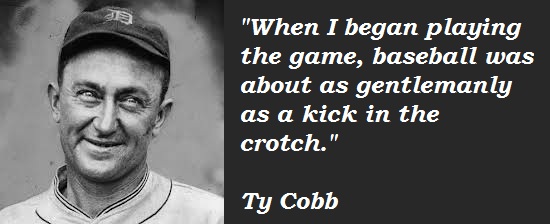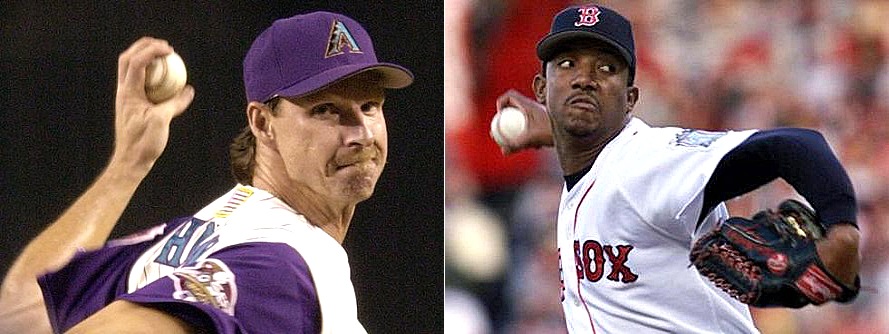On Tuesday, January 6, 2015 at 11 a.m. (PT), the Baseball Writers Association of America (BBWAA) could do something they haven’t done since 1947 – elect more than three players into the National Baseball Hall of Fame.
According to a January 4 article posted by ESPN, seventeen of their undisclosed number of eligible BBWAA voting members cast ballots that gave six of the 34 eligible 2015 Hall of Fame candidates the 75% required for enshrinement into the sacred Halls of Cooperstown.
Now granted, 17 voting members among more than 500 eligible voters is an extremely small sample size – less that four percent to be exact – but it clearly shows that a large number of the usually stingy and often controversial 108-year-old baseball writers group may be loosening up in their rigid voting history.
The last time the BBWAA elected more than three players into the Hall of Fame was the Class of 1947 when they voted in Mickey Cochrane, Frankie Frisch, Lefty Grove and Carl Hubbell. It was the largest class to be voted in since the Hall’s inaugural Class of 1936 in which Ty Cobb, Honus Wagner, Babe Ruth, Christy Mathewson and Walter Johnson were enshrined. Back then there were a total of 226 BBWAA ballots cast, with these five baseball legends receiving the required 170 votes necessary to achieve the requisite 75%.

Although Babe Ruth is often recognized as the greatest player to have ever played the game, the always controversial Ty Cobb actually received seven more votes than the Babe for enshrinement into the Hall of Fame in the inaugural Class of 1936. (Image courtesy of car-mems.com)
Interestingly, the high number of members voted into the Hall of Fame in 1947 had nothing to do with the number of eligible candidates and everything to do with huge changes made to the voting process in 1946 for the Class of 1947. In 1946, the Hall of Fame Committee elected to eliminate the three years between Hall of Fame voting, opting instead to have the BBWAA vote every year.
The committee also created a new two-step ballot process to narrow the field for a final vote. The first ballot (which is the origin of that term) would proceed in the same manner as previous elections, with voters free to name any 10 candidates. However, there would be no possibility of any inductees being elected in this vote; instead, the top 20 candidates would proceed to a final ballot. In order for any candidate to be elected, at least 200 ballots would have to be cast in each phase of the voting.
In addition to the field being narrowed in this manner, it was hoped that these changes would create two distinctly separate categories – retired players who had played in the previous 15 years and players voted in by the Old-Timers Committee who had played any time prior to that.
It was also hoped that the changes would result in adding up to five new members to the Hall of Fame annually which, as we all know, didn’t quite work out that way. And although the significant changes made in 1947 have been tweaked several times since, they established the basic guidelines that are still utilized today – including the two separate categories; although the Old-Timers Committee was recently renamed the Golden Era category. Ironically, the Golden Era Committee, which is not made up of BBWAA members, did not elect even one player into the Hall of Fame in 2015 which, quite frankly, is a travesty.
Should the BBWAA elect four (or more) players from this year’s list of eligible candidates, it would do well to repair the tremendous credibility damage they suffered when they refused to elect even one player into baseball’s most sacred shrine in 2013 – a result of what many BBWAA writers referred to as ‘punishing’ baseball for its steroid era; this in spite of the fact that there were many returning candidates on that year’s ballot with no link to PED use whatsoever. While these BBWAA writers may have thought their cause a noble one, it did nothing more than bring shame to the century-old organization and put the association’s integrity in question.

While it is always best to expect the unexpected from the BBWAA when it comes to their Hall of Fame voting, it is simply impossible to believe that they will not vote in Randy Johnson and Pedro Martinez on Tuesday.
(Images courtesy of Matt York & the Boston Globe)
If the rest of the BBWAA Hall of Fame voting membership follows the path taken by ESPN’s 17 BBWAA voting members, it could be a very significant first step in restoring the group’s tarnished reputation – and that would be a very good thing for everyone involved.




 January 5th, 2015 at 12:00 pm
January 5th, 2015 at 12:00 pm  by Ron Cervenka
by Ron Cervenka  Posted in
Posted in 
